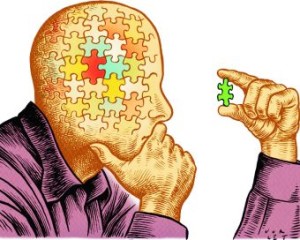Sorry Virginia, The Two Type Trans Typology Has NOT Been Disproven
 A new study out of Europe is being touted by some autogynephilic autogynephilia denialists as proving that there aren’t two types. In this case, they want to show that autogynephilia is just as common in exclusively androphilic transwomen as it is in exclusively gynephilic and bisexual transwomen. Sorry Virginia, the two type taxonomy has NOT been disproven. The actual DATA, not the text of the study, clearly supports the taxonomy.
A new study out of Europe is being touted by some autogynephilic autogynephilia denialists as proving that there aren’t two types. In this case, they want to show that autogynephilia is just as common in exclusively androphilic transwomen as it is in exclusively gynephilic and bisexual transwomen. Sorry Virginia, the two type taxonomy has NOT been disproven. The actual DATA, not the text of the study, clearly supports the taxonomy.
First, recall that there is much noise in any study, much of it because of Social Desirability Bias. There is a strong tendency for transwomen to mis-report their sexuality. A number of gynephilic/bisexual transwoman falsely claim to be exclusively androphilic, often ignoring their own sexuality (e.g. ignoring years of sexual experience with women, including having been married to women).
First, lets look at their three categories and their age of HRT onset.
Sexuality: Gynephilic Bisexual Androphilic
N= 15 26 17
Age of HRT 37.8 31.8 30.0
(SD) years 8.3 8.4 8.7
Do those numbers make any sense given nearly every other study we’ve ever seen? Consider that in the Nuttbrock study, half of the androphilic transwomen had begun HRT before the age of 20 years old while less than 10% of the bisexual had. Another issue is the range (Standard Deviation) in years of the age of starting HRT where it is similar to the other two, but slightly wider. Can this be a hint that some of the putatively androphilic were years younger when they started HRT, but a fair number of older transwomen pulled the age up? As in an older, non-exclusively androphilic transwoman? As though to confirm this, we note that in the demographics table, two of the putatively androphilic transwomen were married, one now divorced. Ummmm… so that’s at least three out of the 17 we know are mis-reporting their sexuality. Two more are cohabitating, living with a lover, but the study doesn’t let us know if it is with men or with women. Another suspicious data point is that six of the 17 reported that their first sexual partners were women and another two were still sexually naive, that is, virgin, analloerotic (“asexual” = not androphilic) leaving only nine who might be androphilic. So here is a Bayesian style statistical prior: I’m betting that at least eight of the 17 transwomen can be proven to not be exclusively androphilic and that the data regarding how many report being autogynephilic will reflect that. In fact, I’m betting that nearly all of those in this study, save two or three, are in fact BISEXUAL, given their age of HRT onset. Because of that, I’m betting that we will see data that will look very much like what we see in other studies, that gynephilic transwomen will report around 80% to 85% AGP arousal to cross-dressing while the bisexual group will report a bit less.
But I’m also betting that in spite of that, because at least some of the androphilic group are truly androphilic, they will report less autogynephilia. But because of the larger number of bisexual mis-reporting to be androphilic, the number will be close to that of the bisexual group, but slightly lower. My guess, from the very slight age difference is only three or four of the seventeen are actually androphilic. Remember, ANY difference will support the two type taxonomy as it points to the latent taxons; It just won’t be a very strong signal because of the false signal from the large percentage of bisexuals:
Sexuality: Gynephilic Bisexual Androphilic
N= 15 26 17
AGP N= 12 14 7
% 86% 54% 41%
Yep… this fits. Most of those claiming to be androphilic are actually bisexual. The researchers fell for the issue of mis-reported sexuality that is common in these studies, especially those from Europe. The mistake is to trust self-reported attraction instead of classifying them based on actual behavior. It is sad, because in other studies from Europe, they demonstrated just how unreliable and unidirectional the mis-reporting bias is.
Because of this, the rest of the study is nearly useless save for looking at the difference between bisexual and exclusively gynephilic transwomen’s sexual behavior.
Conclusion: This study supports, rather than refutes, the two type taxonomy. It shows the same pattern of autogynephilia to be found in non-exclusively androphilic transwomen. Shows the same pattern of reduced self-report of autogynephilia in bisexually identified transwomen seen in previous studies. And shows the same pattern of mis-reporting of sexual orientation seen in previous studies. Yet despite that, the weak signal of exclusively androphilic transwomen NOT being autogynephilic is still detectable. Note that even with the known mis-reporting of sexual orientation, the gynephilic transwomen are still twice as likely to report autogynephilic arousal as the self-reported androphilic.
Further Reading:
Essay exploring the Nutbrock study.
Transsexuals misrepresenting their sexual orientation
Reference:
Laube et al., “Sexual Behavior, Desire, and Psychosexual Experience in Gynephilic and Androphilic Trans Women: A Cross-Sectional Multicenter Study”, Journal of Sexual Medicine, (2020)
https://www.researchgate.net/publication/339738869_Sexual_Behavior_Desire_and_Psychosexual_Experience_in_Gynephilic_and_Androphilic_Trans_Women_A_Cross-Sectional_Multicenter_Study
Comments Off on Sorry Virginia, The Two Type Trans Typology Has NOT Been Disproven